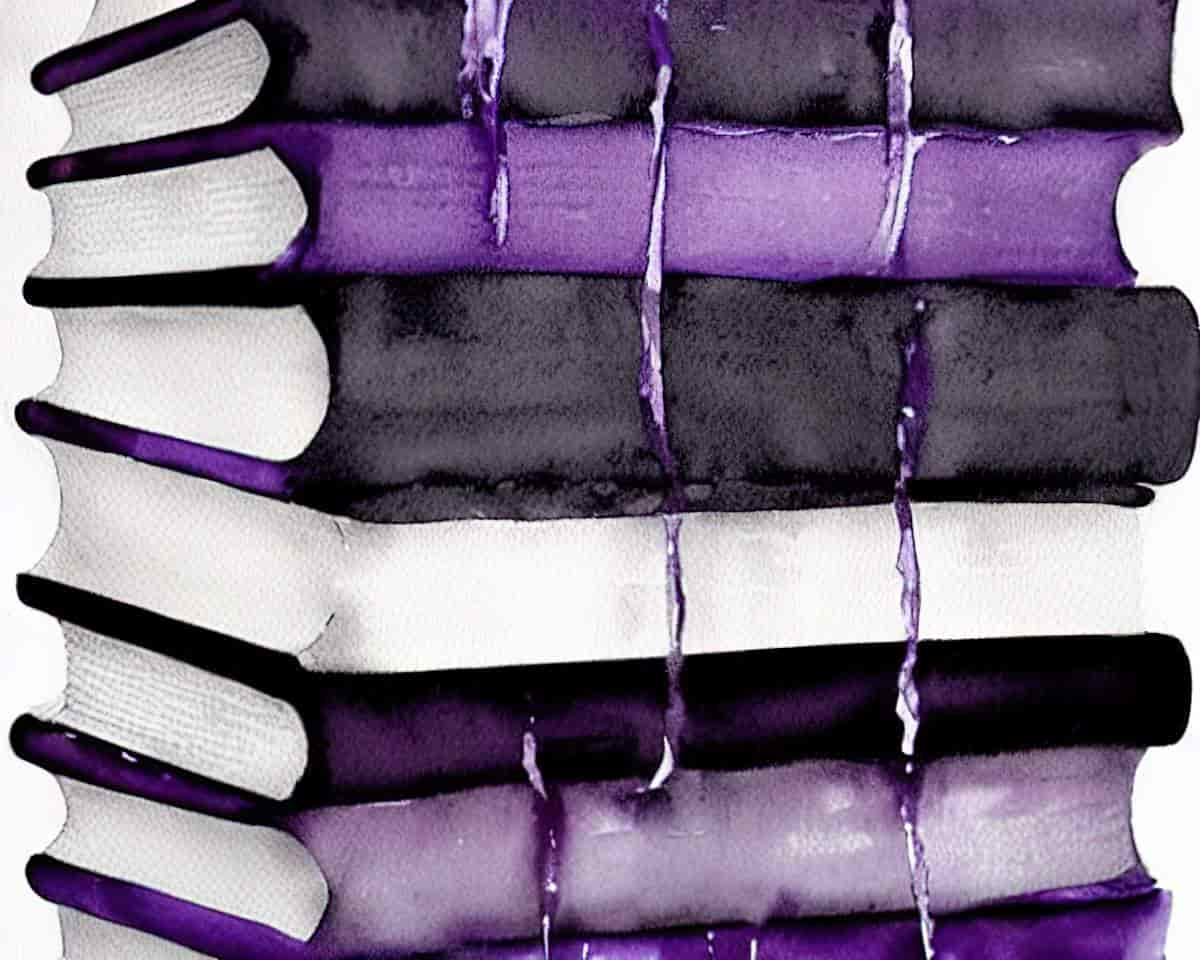If you’re looking for aroace fiction, you should know about The Aroace Database. If you’re into fantasy or YAL you’ll be particularly well-served. This database is maintained by a team of people and you can search by:
- Type of representation: Word of God (meaning the author has talked about it elsewhere e.g. in interviews), On The Page (asexuality is described) or Word Used (the word ‘asexual’ or ‘aromantic’ is used in the story).
- Character importance: Is the ace character the lead (‘hero’), main (important) or side (minor)?
- The most important relationships to the character
- Who they’re paired with
- Notes and warnings
Recently, an increasing number of bookish websites are promoting lists of reading material by and about aces, especially during Asexual Visibility Week:
Books on the lists illuminate how fantasy and YAL readers are increasingly well-served.
- A-Okay by Jarad Greene (2021) (actually a middle grade graphic novel memoir)
- A Snake Falls to Earth by Darcie Little Badger
- Ace of Hearts by Lucy Mason (2022)
- Aces Wild: A Heistby Amanda DeWitt
- Banner of the Damned by Sherwood Smith
- Clariel by Garth Nix
- Elatsoe by Darcie Little Badger (2020)
- Every Bird a Prince by Jenn Reese (2022) (Middle grade)
- Every Heart a Doorway by Seanan McGuire
- Everyone Hates Kelsie Miller by Meredith Ireland
- Fire Becomes Her by Rosiee Thor (an aromantic not asexual main character)
- Funeral Girl by Emma K. Ohland
- Guardian of the Dead by Karen Healey
- Hazel’s Theory of Evolution by Lisa Jenn Bigelow (2019) (Middle grade)
- I Am Not Your Chosen One by Evelyn Benvie (2022)
- Inheritors of Power by Juliette Wade (2022)
- It Sounds Like This by Anna Meriano (2022)
- June and Devon Come to Life by Sandra Henry
- Legacy of the Vermillion Blade by @Tallsquall (2022)
- Little Black Bird by Anna Kirchner (2020)
- Other People’s Butterflies by Cora Ruskin (2021)
- Of the Wild by Elizabeth Wambheim (2021)
- Quicksilver by R.J. Anderson
- Raybearer by Jordan Ifueko (2020)
- Rick by Alex Gino (2020) (Middle grade)
- Scavenge the Stars by Tara Sim
- Skeleton From The Closet by S.E. Wigget (2017)
- Snowstorm & Overgrowth: A Queer Fantasy & Solarpunk Collection by Claudie Arseneault
- Summer Bird Blue by Akemi Dawn Bowman
- The Bone Season Series by Samantha Shannon (2013)
- The Butterfly Assassin by Finn Longman (2022)
- The Circus Infinite by Khan Wong (2022)
- The Kindred by Alechia Dow
- The Romantic Agenda by Claire Kann
- The Sound of Stars by Alechia Dow (2020)
- The Summer of Bitter and Sweet by Jen Ferguson
- The Rhythm of My Soul by Elin Dyer (2021) with a sequel in 2022
- The Threat of the Hunt by Madeline Dyer (2022) (all of this author’s books published under the names Elin Dyer and Elin Annaliese have ace characters.)
- The Towers of Nine by Alyssa Louttit (2022)
- We Go Forward by Alison Evans (2016)
- What We Devour by Linsey Miller
- Let’s Talk About Love by Claire Kenn YA contemporary with a romance
- The Romantic Agenda by Claire Kann (2022) — Thirty, flirty, and asexual Joy is secretly in love with her best friend Malcolm, but she’s never been brave enough to say so. (Content notes: CW: anxiety, panic attacks, acephobia, mention of a past car accident)
- Ace of Hearts by Lucy Mason — When a career-ending sports injury causes Felix to lose his scholarship, he marries his best friend for free tuition at the college where she works—but their fake marriage creates real feelings.
(Others have done more comprehensive lists e.g. 50 BOOKS FEATURING ASEXUAL MAIN CHARACTERS | BOOK LIST
BIPOC AUTHORS
- Elatsoe by Darcie Little Badger (Lipan Apache)
- Snake Falls to the Earth by Darcie Little Badger
- The Summer of Bitter and Sweet by Jen Ferguson (métis)
- The Bone People by Keri Hulme (Māori)
However, sometimes a story resonates more when the asexuality (or other type of queerness) is metaphorical, and probably not intended. (On the topic of ‘intentionality’, I happen to think what an author intends is irrelevant compared to how a story resonates with readers, and what it actually does.)
Below is a different collection of narratives. These ones probably won’t make it into the Aroace Database. They are aroace for their aesthetic. Perhaps they depict an aroace way of being in the world rather than an ace character. Alternatively, they won’t make the lists because they are a bit older and therefore out of fashion, because the aceness is commonly explained away as something else, or because short lyrical fiction is seldom read outside academia.
How the aceness of these stories is typically explained away:
- They’re not ace, the character was living in a repressive milieu
- They’re not ace, the character is having a trauma response
- They’re not ace, the character is actually gay
- They’re not ace, the character is actually sociopath/narcissist
- They’re not ace, the character is actually Autistic
Before arguing against the possible aceness of these characters, be aware that these exact talking points are also directed at ace people. The aces in your life will probably not be up for a fun, hypothetical literary debate over reasons for your non-ace take.
Also, ‘relatable to aspec people’ does not concern the frequency or explicitness of sex scenes. (That’s a whole different and highly contentious issue.)

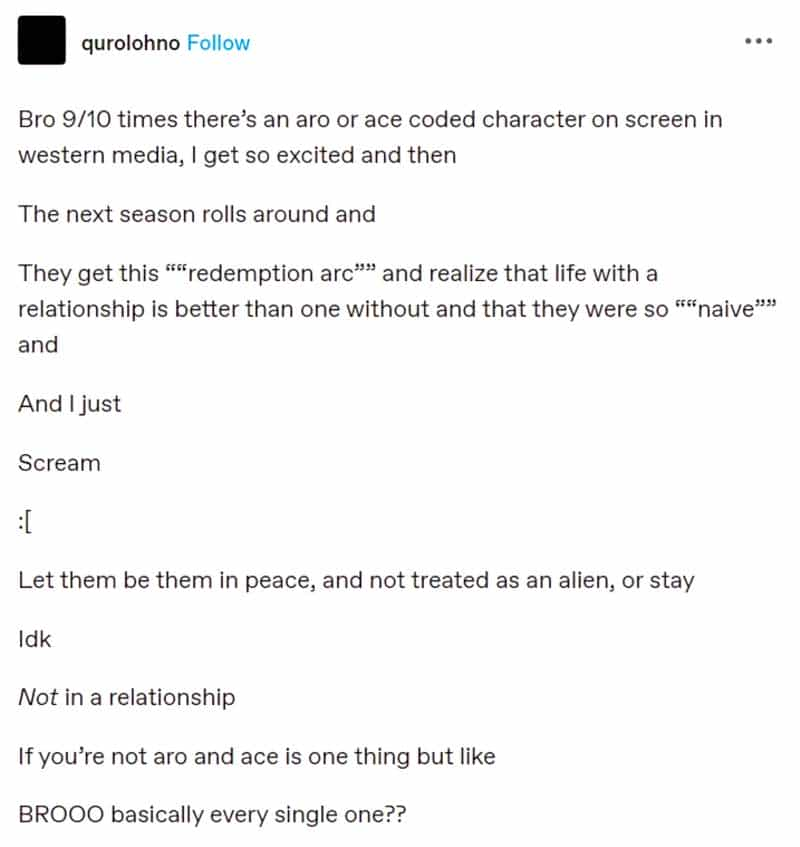
ANCIENT MYTHOLOGY: ARTEMIS AND ATHENA
idc if i sound like a nerd, but the greek goddesses artemis and athena were asexual. artemis is the goddess of the hunt and the moon, and she’s aroace. she never had any kids, at all, and her hunters were all girls who never wanted to get married and have kids either, also aroace. athena was asexual, but not aromantic. she had kids, but her kids were like, “brainchildren” she never had sex, it was like they were thought of, and then created thru thought. i learned abt the greek gods and greek mythology from reading percy jackson, and i learned this abt artemis and athena from another blog, which i cant remember the name of, or else i’d tag them. when i read those books as a child who didn’t know what ace, aro and aroace was, i always felt a connection to artemis and athena. they were always my favourites. ik now that the reason i felt that pull, was bc i was aroace and so were they.
lonely-little-aroace
NOVEL AND FILM: THE REMAINS OF THE DAY BY KAZUO ISHIGURO (1988)
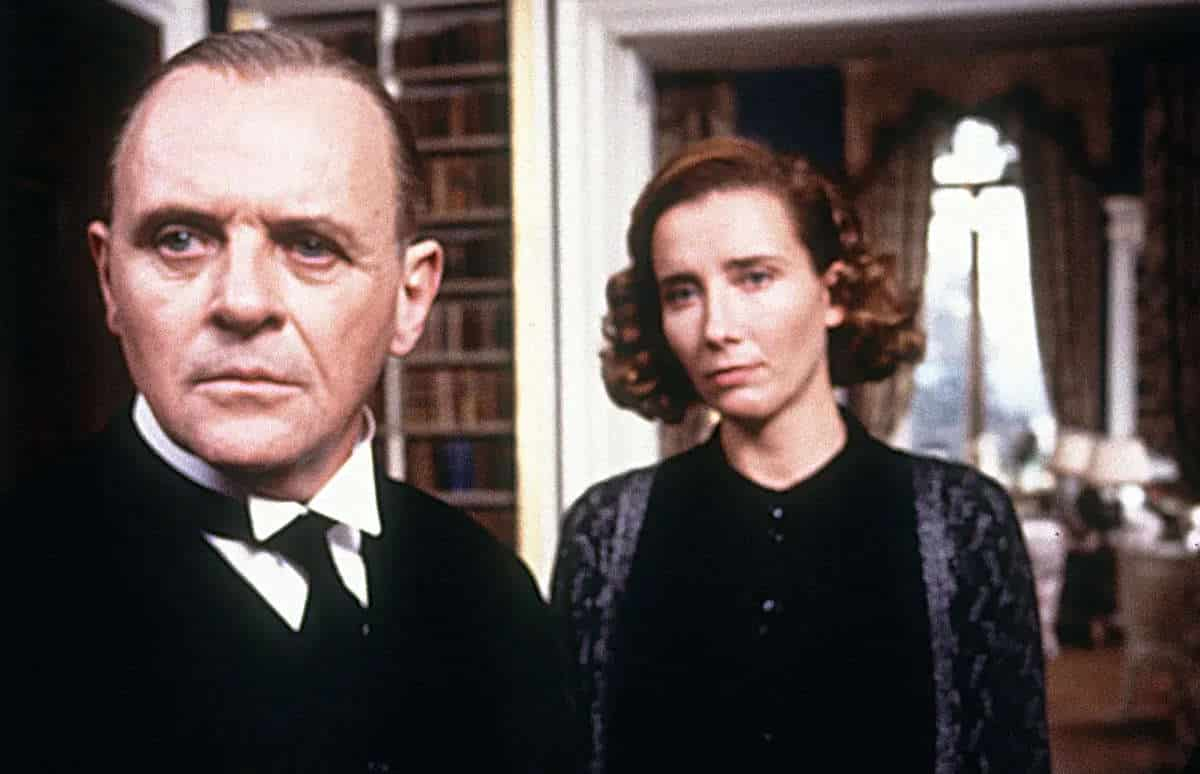
The popular view of Stevens: That he is repressed and constricted by his upbringing and circumstances. But his father had the same sort of upbringing and is different again. I read Stevens as aroace. A life in service would have been a pretty good option for an aroace of the early 20th century, until, that is, your found family inevitably gets married and moves on.
The book and movie also exemplify a number of everyday microaggressions experienced by asexual aces, namely how others laugh at their supposed naivety and obvious discomfort.
NOVEL: THE EDIBLE WOMAN BY MARGARET ATWOOD (1969)
The main character, Marion, is a young woman living in the city — kind of like Peggy from Mad Men. Then she gets engaged to an insufferable lawyer type and is heading for the normie life when she meets a weird guy called Duncan who likes to hang out at the laundromat and watch the clothes spinning and seems to be everywhere, like a figment of Marion’s imagination.
This guy is clearly asexual in an era before asexuality had a name. Margaret Atwood is very on-the-page about this, and seems to know what it’s like to be an asexual man in the late 1960s. For one thing, he has no idea what his identity is, but he knows he’s not straight. So he just assumes he’s gay:
“Well, maybe I’m a latent homosexual.” he considered that for a moment. “Or maybe I’m a latent heterosexual. Anyway I’m pretty latent. I don’t know why, really. Of course I’ve taken a couple of stabs at it, but then I start thinking about the futility of it all and I give up. Maybe it’s because you’re expected to do something and after a certain point all I want to do is lie there and stare at the ceiling. When I’m supposed to be writing term-papers I think about sex, but when I’ve finally got some willing lovely backed into a corner or we’re thrashing about under hedges and so on and everything is supposed to be all set up for the coup de grace, I start thinking about term-papers. I know it’s an alternation of distractions, both of those things are basically distractions you know, but what am I really being distracted from? Anyway they’re all too literary, it’s because they haven’t read enough books. If they’d read more they’d realize that all those scenes have been done already. I mean ad nauseum. How can they be so trite? They sort of get limp and sinuous and passionate, they try so hard, and I start thinking oh god it’s yet another bad imitation of whoever it happens to be a bad imitation of, and I lose interest. Or worse, I start to laugh. Then they get hysterical.’ He licked the sugar from his fingers, thoughtfully.
The Edible Woman, pp178-9
By coincidence, the characters happen to messing around with spilt sugar in a coffee shop, nowadays an asexual symbol which comes in the form of cake. Important context: Duncan has just propositioned Marion, but wasn’t exactly suave about it:
“I mean you personally don’t arouse exactly a raging lust in me or anything. But I thought you would know how, and you’d be competent and sensible about it, sort of calm. Unlike some. I think ti would be a good thing if I could get over this thing I have about sex.” He poured some of the sugar out onto the table and started tracing designs in it with his index finger.
Later, Marion goes for a strange and elaborate dinner put on by Duncan and his two equally odd flatmates, where Duncan says twice that he would like to be an amoeba.
‘At last I know what I really want to be,’ Duncan said into the suddenly quiet room. He was gazing serenely at the ceiling, a whitish-grey trace of sauce in his hair. ‘An amoeba’.
The Edible Woman p188
Marion asks him after the dinner why he’s so interested in amoebas:
‘Oh, they’re immortal,’ he said, ‘and sort of shapeless and flexible. Being a person is getting too complicated.’
The Edible Woman p189
In the late 1960s when Margaret Atwood was writing her first novel, she could not have predicted that on October 12th (2000), the Yahoo group ‘Haven for the Human Amoeba’ would be founded — the original online hangout space for 21st century asexuals. Atwood hasn’t used the word ‘asexual’ when painting the character Duncan, but in absence of the word, she has used ‘amoeba’ as proxy for his orientation. She has something which isn’t at all the same (asexual reproduction) because there was no word to describe asexual orientation, which is exactly the position actual asexuals found themselves in before the year 2000.
After the dinner, Duncan once again proposes sex to Marion, but he very much makes sure this can’t happen. For once thing, Marion is engaged to another man. Let’s admire Duncan’s lack of enthusiasm for a moment. First, Duncan suggests Marion is made of wool all the way through due to her heavy winter clothing.
‘And we can’t go to mine,’ Duncan said, showing neither surprise nor glee at [Marion’s] implied acceptance.
‘I guess we’d have to go to a hotel,’ she said, ‘as married people.’
‘They’d never believe it,’ he said sadly. ‘I don’t look married. They’re still asking me in bars whether I’m sixteen yet.’
‘Don’t you have a birth certificate?’
‘I did once, but I lost it.’ He turned his head and kissed her on the nose ‘I suppose we could go to the kind of hotel where you don’t have to be married.’
‘You mean… you’d want me to pose as a — some kind of prostitute?’
‘Well? Why not?’
‘No,’ she said, a little indignantly. ‘I couldn’t do that.’
‘I probably couldn’t either,’ he said in a gloomy voice. ‘And motels are out, I can’t drive. Well I guess that’s that.’ He lit another cigarette. ‘Oh tell, it’s true anyway; doubtless you would be corrupting me. But then again,’ he said with mild bitterness, ‘maybe I’m incorruptible’.
The Edible Woman p190
Note that the character of Duncan is also an aesthete regarding food — he finds it a nuisance even to consume food. Themes of this novel are around robotic emotions and mechanical compulsions, and the character of Duncan helps illuminate those themes.
It would be nice if asexual-coded characters weren’t always the infantilised, robotic, no-fun weirdos, but it’s interesting to see such clear asexual representation in a novel from this era by one of the world’s great writers.
It would also be very nice if asexual-coded characters weren’t liars. Eventually Marion goes with Duncan to a hotel where they have very uninspiring sex. Duncan is not only bad at sex, but quite insulting. He tells Marion she looks terrible.
The following morning, the pair go for a walk in the snow to a brick factory below a cliff and Duncan — ever the trickster — understands that Marian needs some reassurance. He then reveals that he is not a virgin at all. Marian feels used.
‘How was what? Oh. That.’ He was silent for several minutes. She listened intently, waiting for his voice as though for an oracle. But when he spoke at last he said, ‘I like this place. Especially now in winter, it’s so close to absolute zero. It makes me feel human. By comparison. I wouldn’t like tropical islands at all, they would be too fleshy, I’d always be wondering whether I was a walking vegetable or a giant amphibian. But in the snow you’re as near as possible to nothing.’
Marian was puzzled. What did this have to do with it?
‘You want me to say it was stupendous, don’t you?’ he asked. ‘That it got me out of my shell. Hatched me into manhood. Solved all my problems.’
‘Sure you do, and I could always tell you would. I like people participating in my fantasy life and I’m usually willing to participate in theirs, up to a point. It was fine; just as good as usual.’
The implication sank in smoothly as a knife through butter. She wasn’t the first, then.
The Edible Woman p247
DEADEYE DICK BY KURT VONNEGUT (1982)
TV SERIES: DOCTOR WHO
Most versions of The Doctor from Doctor Who are considered aspec by the aspec community.
TV SERIES: THE IMPERFECTS
Abbi Singh (played by Rhianna Jagpal), one of the main characters of Netflix’s new show The Imperfects, explicitly states she’s ace in the very first episode.
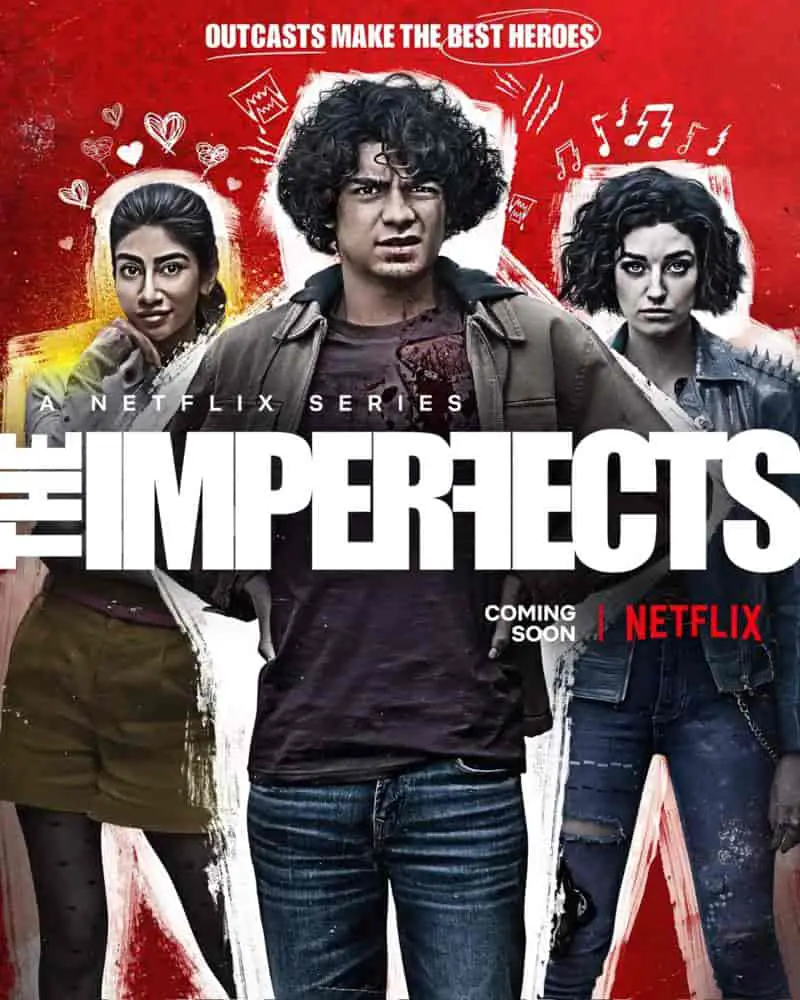
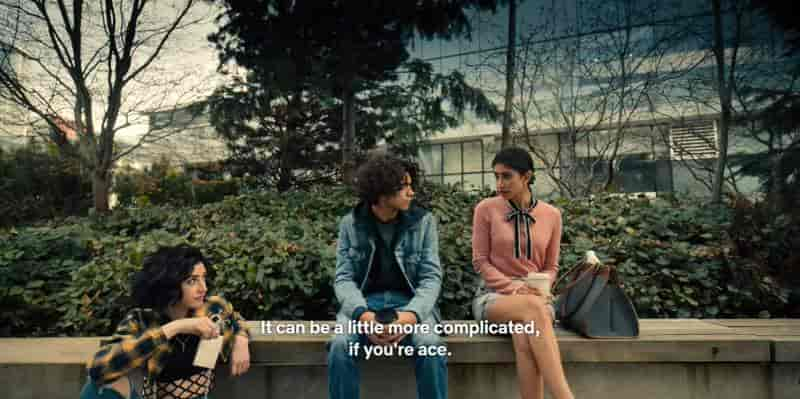
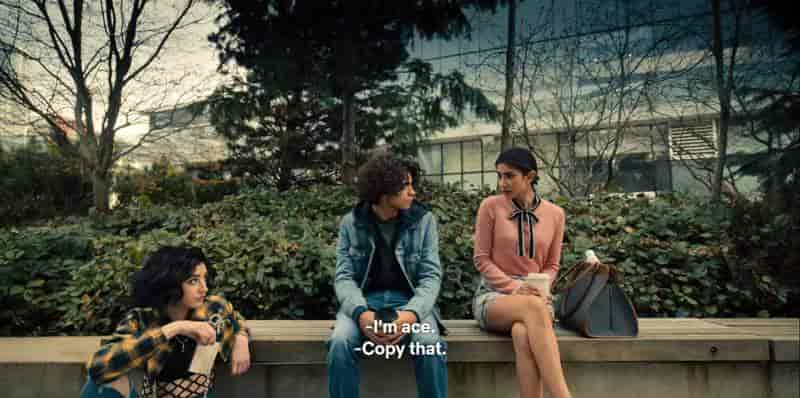
TV SERIES: SEX EDUCATION
Sex Education did a roundly poor job of showing an asexual storyline, given how the entire show revolves around sexual orientation and gender identity. So the aroace community got excited when ace activist Yasmin Benoit revealed that she had been consulted for a Season 4 storyline featuring an ace character who gets more than five minutes of screentime. However, once she had seen the show herself, Yasmin shared this to Xwitter, which I want to share here as a cautionary tale for any minority called in as a ‘consultant’. As you can see, Yasmin is careful in what she says, partly because many ace viewers are excited to simply be seen on screen, and she doesn’t want to dampen their enthusiasm:
I wanted to share something important regarding O’s character in Sex Education S4, as someone closely involved in creating her and the story. I’ve finally had time to watch the season and was disappointed to see that some important moments were cut out or changed.
The scene between Otis & O in the lift picked things up again & touched on the themes that were meant to be present throughout, but only through exposition. You didn’t get to see the impact of race, privilege and acephobia as much as intended, it’s just mentioned in passing.
There was meant to be a scene of O receiving acephobic bullying in camp & deflecting by shifting the focus to Ruby. The lines were removed, making it seem like O humiliated Ruby unprompted. Whereas scenes that made Otis look bad in his desperation to bring O down were removed.
Maybe someone decided that Otis wasn’t coming across well enough, so they made O look worse. Maybe they just didn’t have enough time to resorted to exposition, not realising that scenes portraying an asexual character as inherently “cold” was dangerous.
O was not meant to be a villain. She was a WOC being pushed out of a space she had found success in by a white guy who thought he deserved to be there more than her. She was meant to be the target of a petty smear campaign that led to her being outed.
That doesn’t come across as much as it did in the script, but I’m grateful to have been able to work on the character and storyline, and I’m glad that people have enjoyed her anyway. I think that those who didn’t would have done if more of O’s moments were included.
So you might want to keep in mind that almost all of the interviews and promotion I’ve done regarding the storyline took place before I had the opportunity the season, when I thought it was depicted the way it was in the script!
@theyasminbenoit
Of course, mainstream sensationalist media picked up on this thread and accused Yasmin of ‘slamming’ the series, so next, Yasmin was required to clarify that.
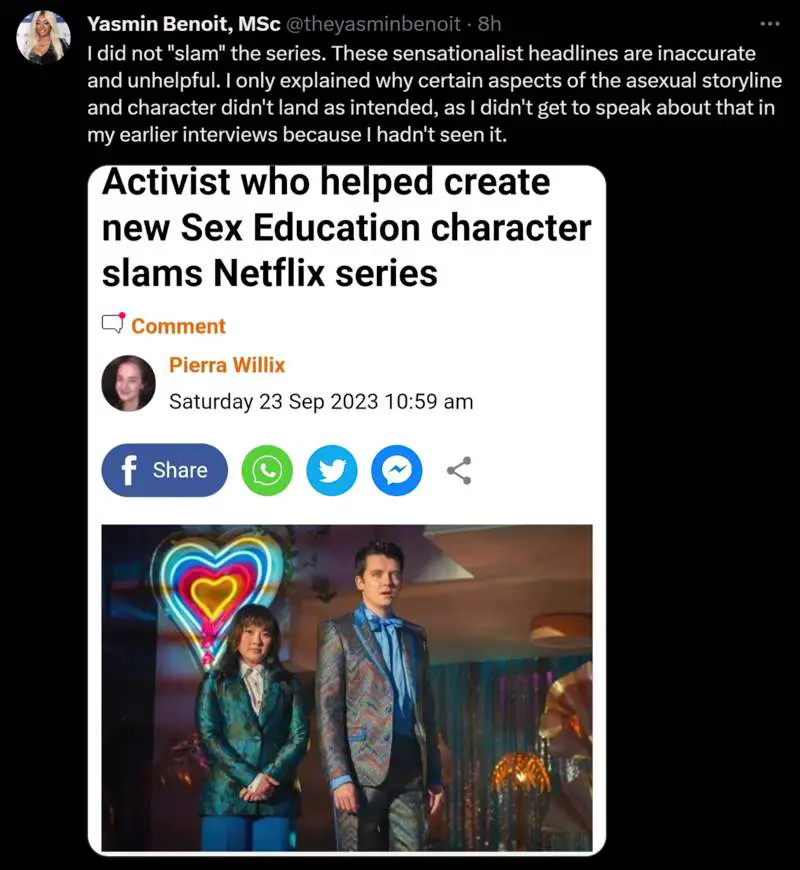
(The white media does love an Angry Black Woman to dump on.) Julie Kliegman subsequently published a nuanced take on the characterisation of O at Vulture.
THE HUNGER GAMES BY SUZANNE COLLINS

COMICS
Seemingly Dark is available on Tapas and also on Webtoon. This is a supernatural mystery comic with plenty of queer/ace characters.
Follow Mickey, the widower mailman as he struggles to raise his daughter with the support from his friends from the local punk rock coffee shop. Maddie’s trying to solve mysteries, John just wants to get through life, and world famous podcaster Caro is hiding secrets of their own. As if that’s not enough, Mickeys being haunted, and when he picks up the strange hitchhiker on the outskirts of town, he may have unleashed the apocalypse.
updates monthly
description of Seemingly Dark
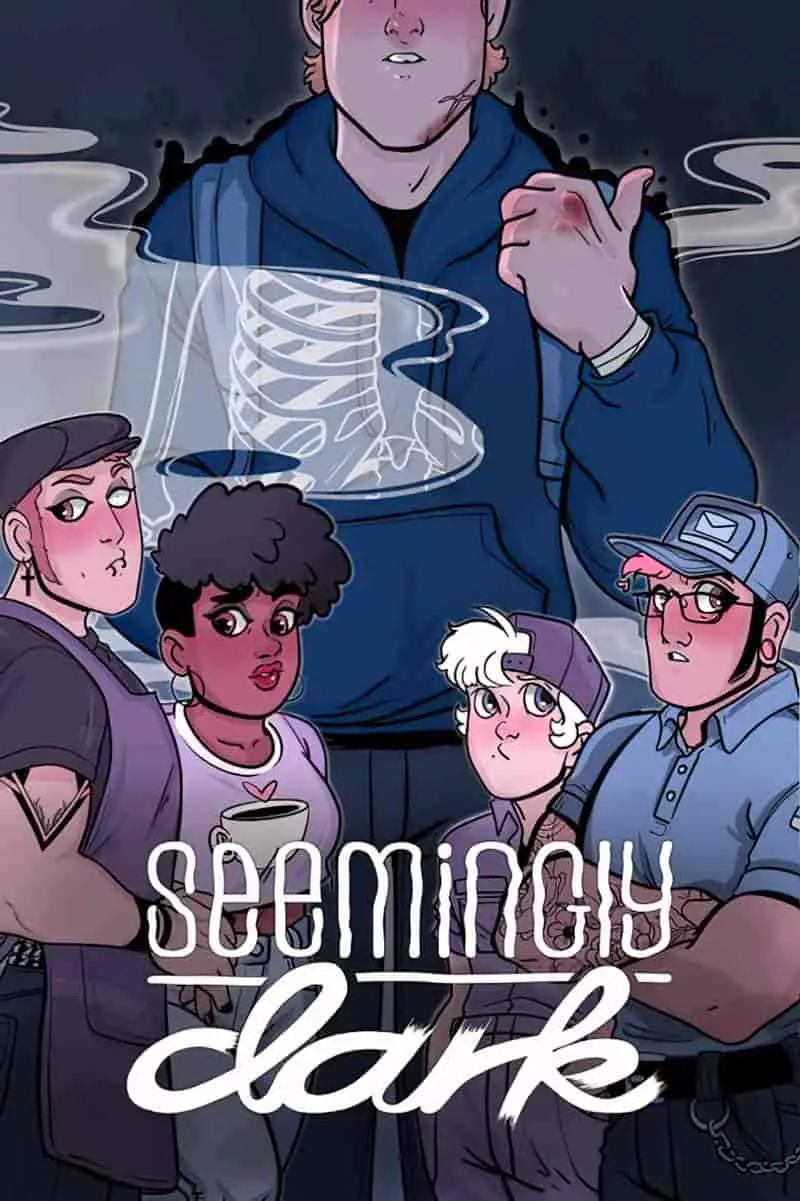
Mil-liminal is on PATREON and Ko-Fi.
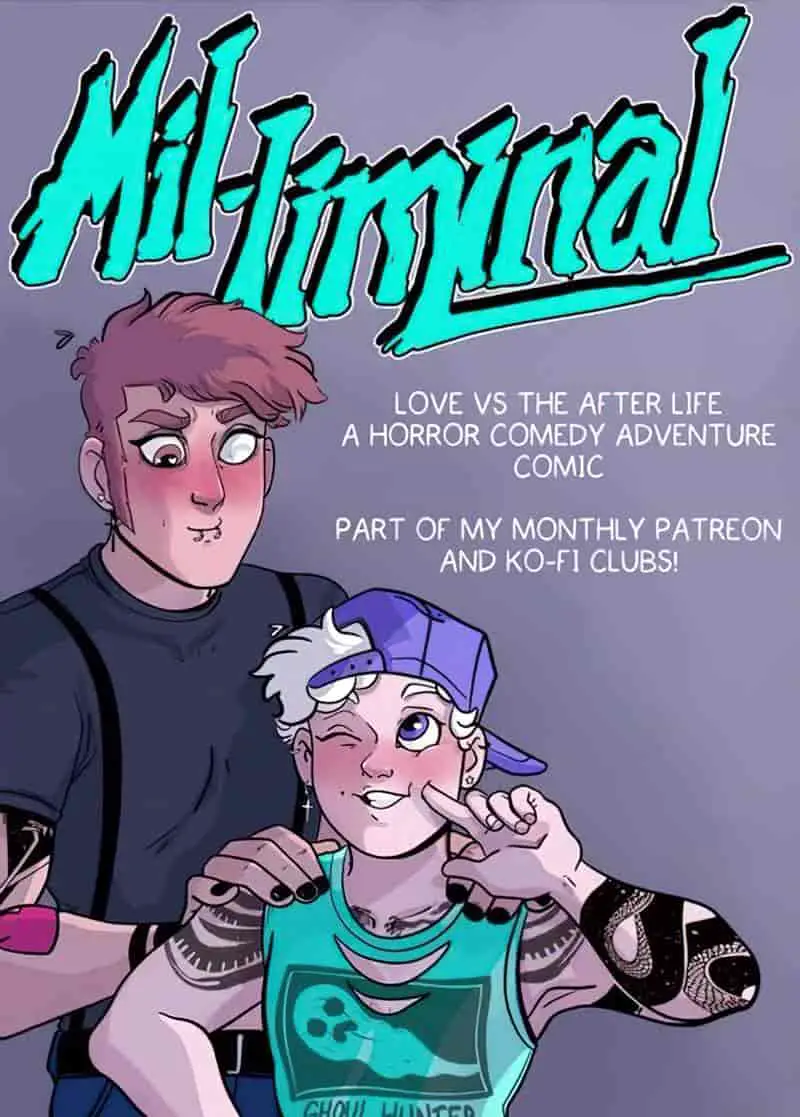
GOOD OMENS THE TV SERIES
Aziraphale from Good Omens, a novel by Neil Gaiman, is an angel who doubles as an antique book dealer. This character is asexual and agender. (Crowley, their romantic partner, is genderfluid.)
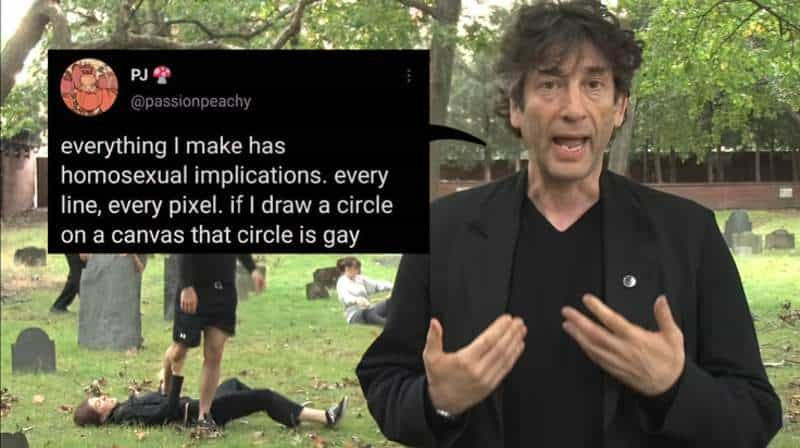
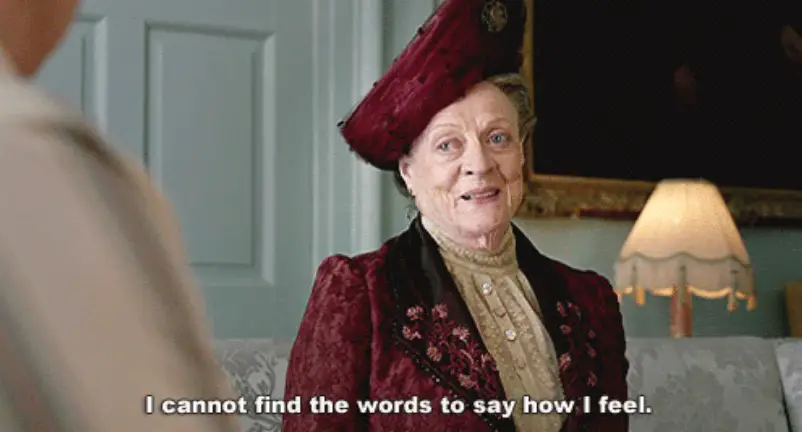
Gaiman has said on social media that neither is male, and the gender of Aziraphale is ‘fallen angel’.
I don’t know what changed in the process of taking Good Omens from novel to television series, from one season to the next, but I have a sneaking suspicion of the factors involved: A fandom that exploded with ever more queer kids and odd ones who felt seen and loved in that same space; the constant legislation against queerness, transness, disability, and healthcare; a global pandemic that isolated us from one another. Those are the big ones, but there are smaller ones at play, too: actors who were more than happy to play those roles and those stories; the increasing homogenization of blockbuster media providing a backdrop to counteract; an ugly surge from groups who tried to insist that one of the book’s authors was against trans rights.
Emmet Asher-Perrin at Tor
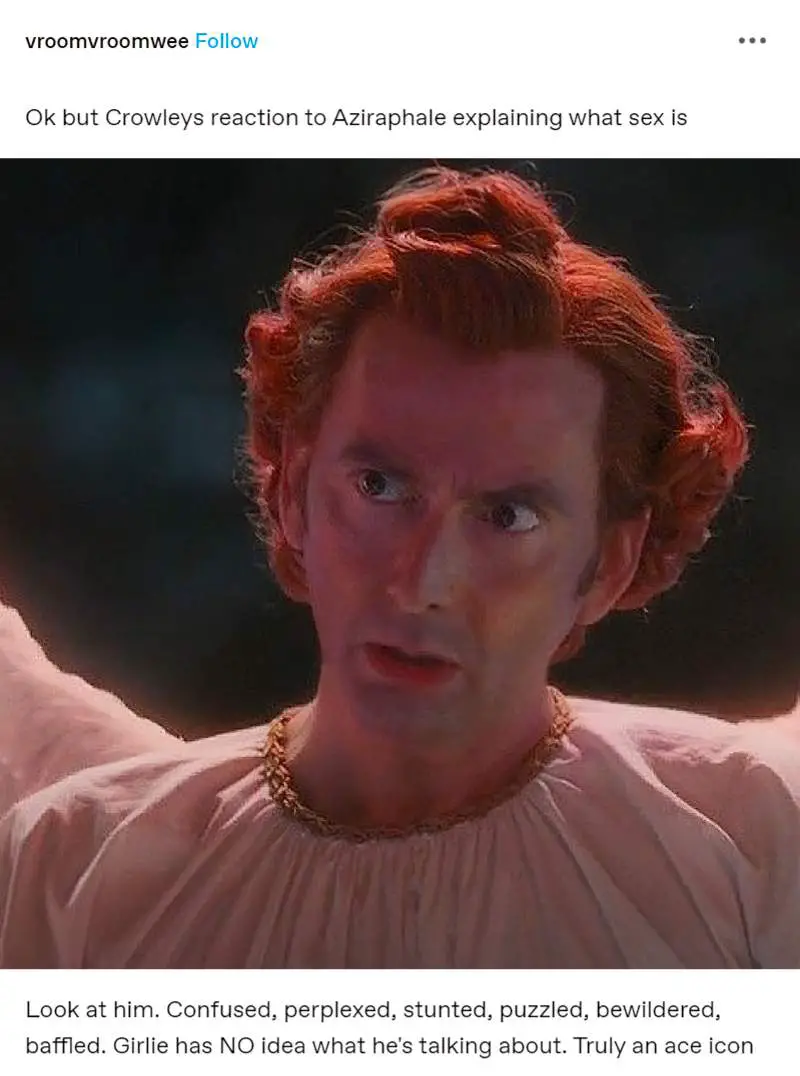
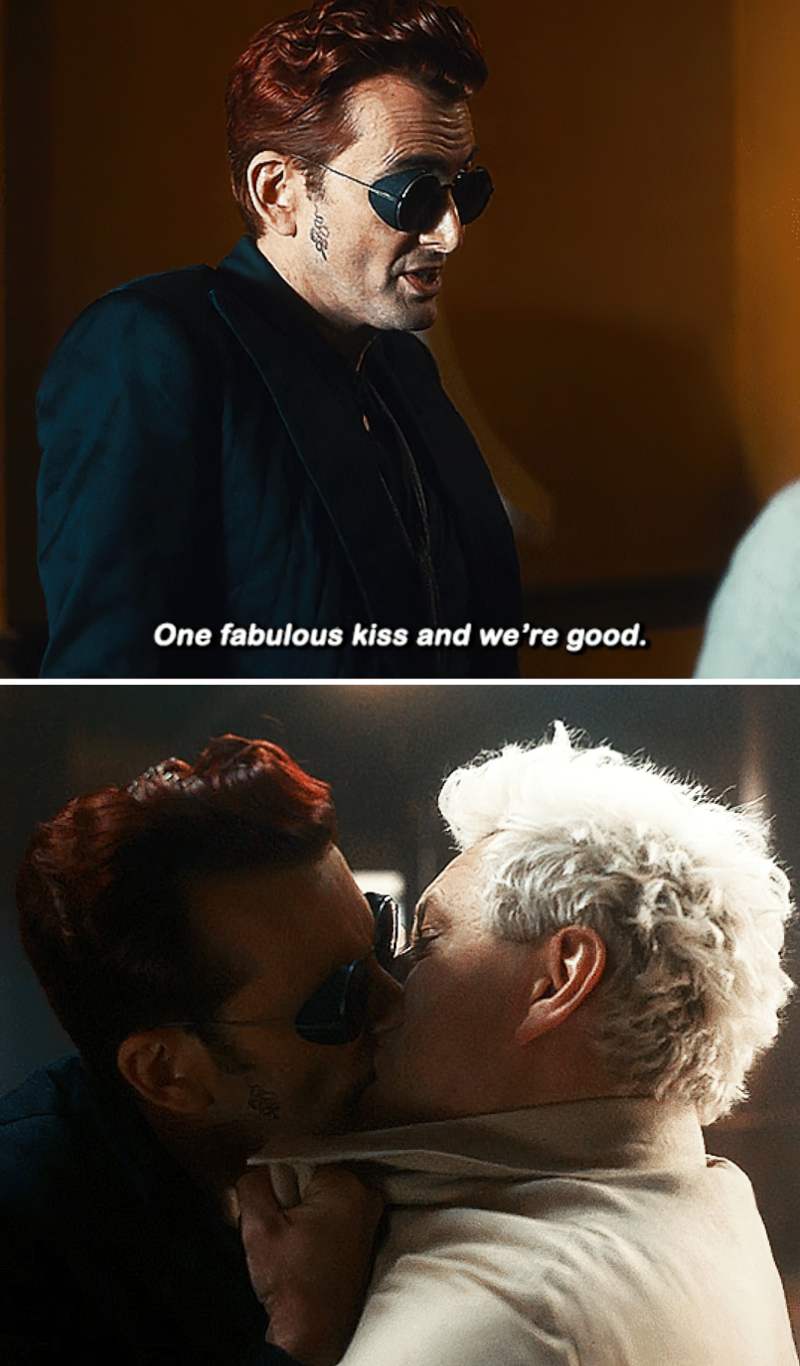
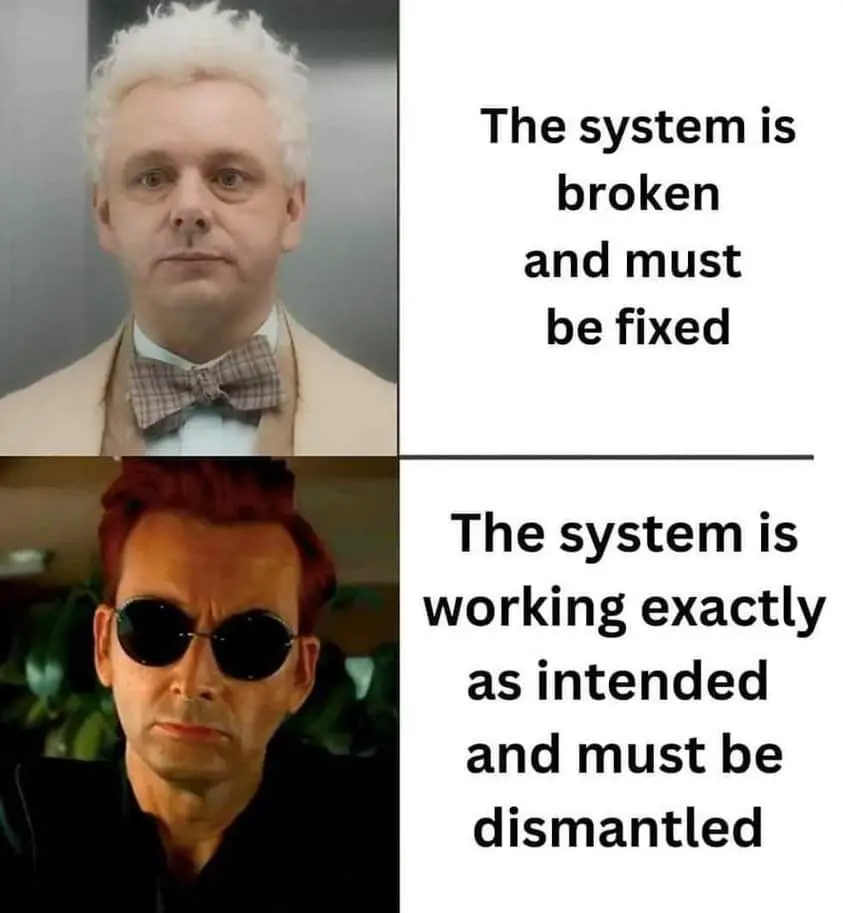
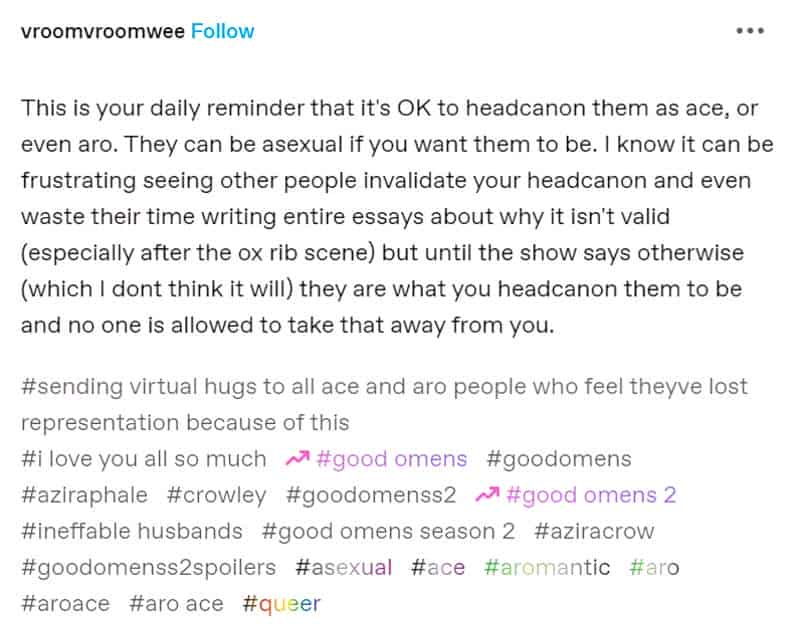
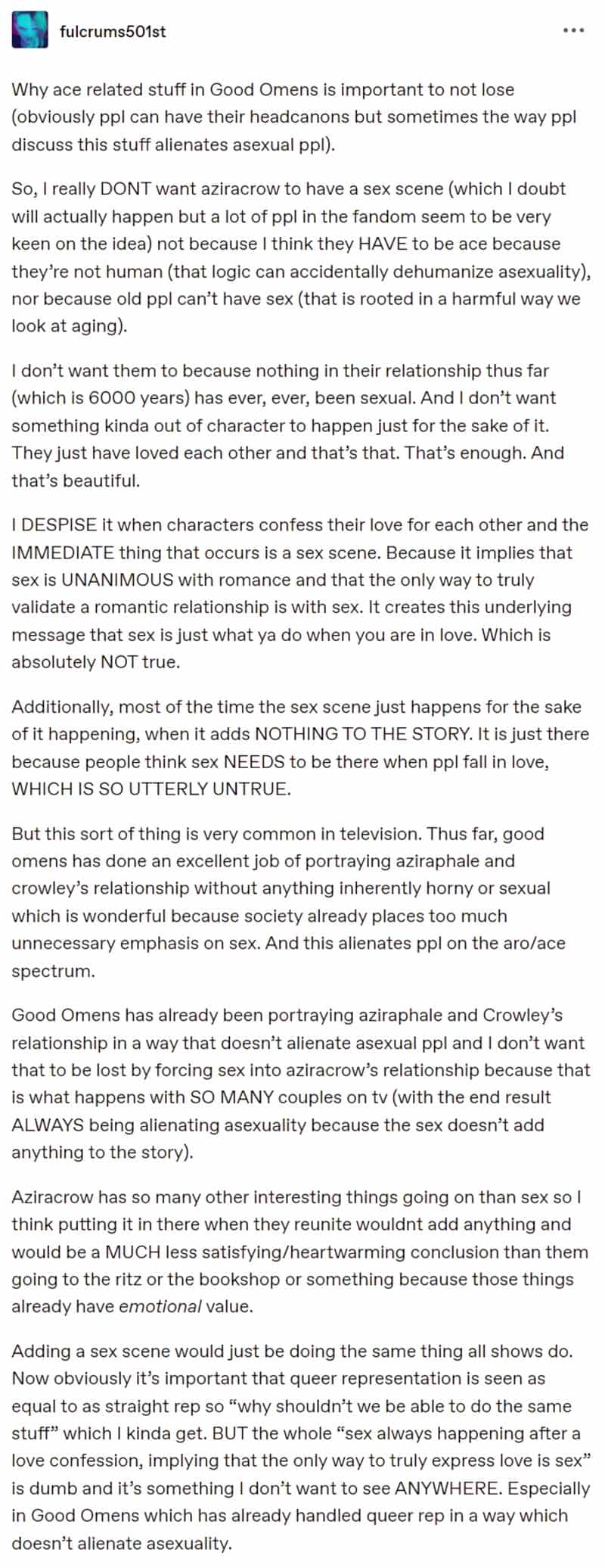
SHORT NOVEL: ON CHESIL BEACH BY IAN MCEWAN
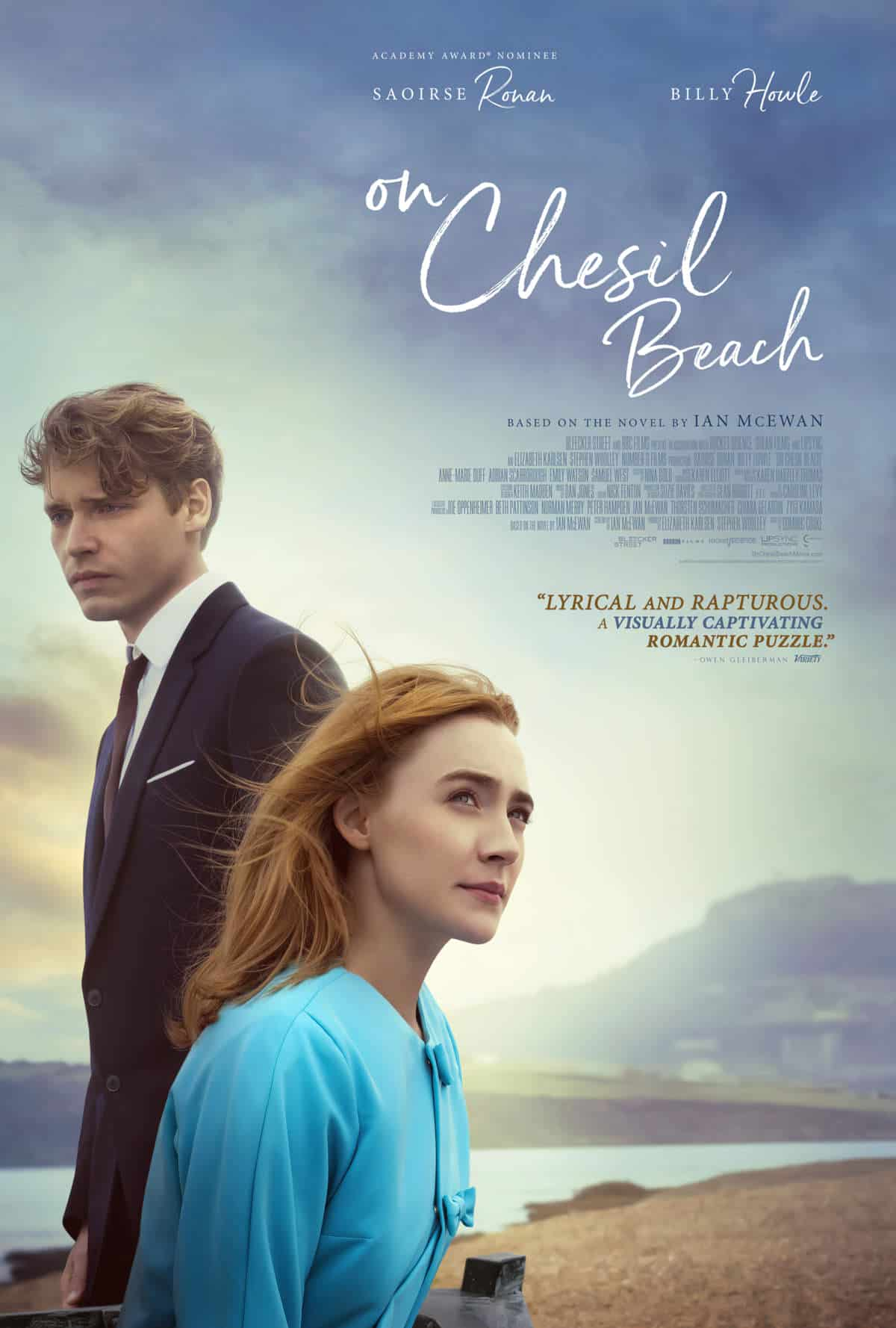
Many readers detect hints of sexual abuse in the backstory of Florence but trauma or not, Florence can be read as sex repulsed ace.
NOVELLA: THE BALLAD OF THE SAD CAFE BY CARSON MCCULLERS
This novella was adapted for film in 1991, the same year as Thelma & Louise. The opening is reminiscent of Thelma & Louise, but that’s probably just due to the soundtrack and the rural American setting. The stories are nothing alike.
The film is actually based on a stage play of as intermediary.
In writing this story, McCullers told their penpal that “agape” was the highest form of love. (A love independent of romance and sex.) The friend felt the highest form of love was “eros”. So McCullers set about writing a story with a love triangle sans the romance and sex to show it could be done.
Whatever else you have to say about McCullers’ story, it’s one of a kind!
LITTLE WOMEN BY LOUISA MAY ALCOTT
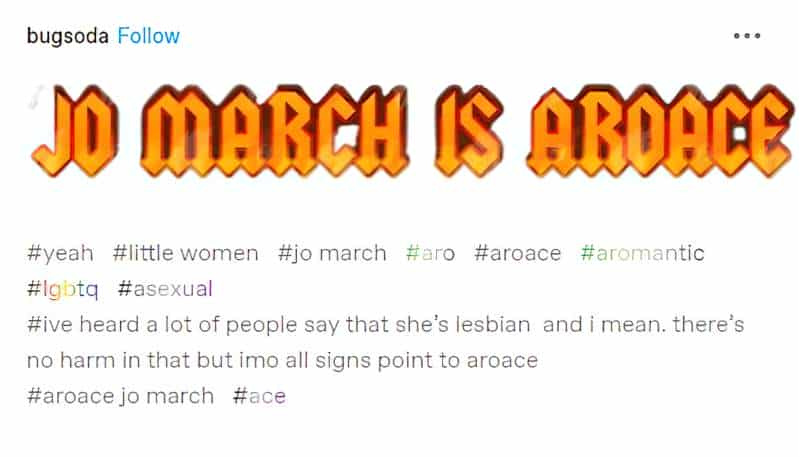
“OPEN HOUSE ON HAUNTED HILL” BY JOHN WISWELL
I’ve analysed John Wiswell’s award-wining short story in depth.
Sometimes you find your queer rep on the page, named and explored and tied up with a bow, but sometimes you’ll find your queer rep at a metaphorical level. Sometimes the metaphorical kind is more resonant.
“SPACESHIPS HAVE LANDED” BY ALICE MUNRO
Alice Munro demonstrates great sympathy for ace spectrum identities. This is evident from her earliest work. Take the following sentence from “The Peace of Utrecht”, first published in 1960: “Unconsummated relationships depress outsiders perhaps more than anybody else.”
Fast forward three decades, she’s still interrogating what it means to live a good life. Does one really have to marry?
There’s a character in this (long) 1990s short story which I’m sure readers will decode as gay, but Alice Munro does a big switcheroo (in more ways than one) and there’s a case to be made that the ‘closeted gay’ character is in fact asexual. The word asexual is not used, but it wouldn’t be, because the entire story is about young people navigating their coming-of-age in the 1950s when people lacked concepts for a number of things, and when ‘choices’ weren’t true choices.
Content note: a sex scene which isn’t entirely consensual. There are no details, but what happens in its aftermath is shocking.
“A REAL LIFE” BY ALICE MUNRO
If “Spaceships Have Landed” is an example of an asexual who found his family in an unexpected role for himself, this one’s for the aromantics. You’ll fall in love with Dorrie from “A Real Life“. Best of all, Dorrie isn’t the one with the unhappy ending. Dorrie lives her best life as an aro. (She may or may not be asexual as well. This is left off the page.)
The “Real Life” of the title comes from the notion that there’s only one way to live a ‘real’ life and that’s by partnering up and getting married. Alice Munro skewers it, and illuminates the pettiness of the village people who laugh privately at Dorrie for presenting in a non-sexual way for the benefit of others, namely the male gaze.
“RED DRESS—1946”
“Red Dress—1946” is possibly Alice Munro’s most asexual story of them all.
A thirteen-year-old girl is preparing — very reluctantly — for her first ball. Her mother sews a red dress, with a princess neckline. She barely recognises herself in the mirror, and longs for childhood again.
Almost all the girls around her are obsessively interested in boys, including her best friend, Lonnie. Because of their different experience of sexuality, the pair are drifting apart. The world is looking very lonely lately.
Everyone except the narrator and one other girl despises boys. They meet in the bathroom at the horrible ball. This older girl plans to support herself by working as a P.E. teacher and offers to take the younger girl under her wing.
Published in 1968, there’s no way this is a deliberately asexual narrative, but metaphorically it hits the spot. And who knows, maybe Alice Munro did understand the full range of human sexuality, being a keen observer of human kind.
“MATTRESS SALE” BY DAVID J. KRAMER
“Mattress Sale” is a short story in The Best Australian Stories 2006, edited by Robert Drewe. A young man is moving between states and a much older woman arrives at his house to pick up a mattress he is selling. She persuades him to help her deliver the mattress to her flat as she has no one else.
This story is not an asexual story, but features a first person narrator who finds himself in a sexual situation with someone to whom he is completely unattracted. He must then work out how to disentangle himself from the situation without causing either party too much humiliation.
So I feel this story is relatable to the aroace community.
DISCWORLD CHARACTERS

Granny Weatherwax, Tiffany, Vetinari, Vimes, Carrot are suggested additions to the list.
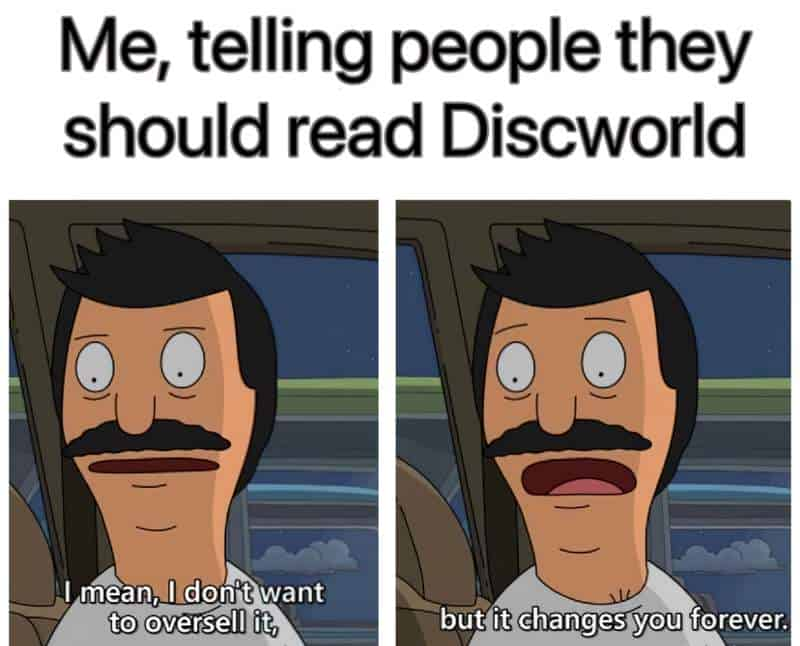
GRAPHIC MEMOIR: GENDERQUEER
(I probably shouldn’t be including ‘memoir’ on a fiction list but I’m including memoir anyway.)
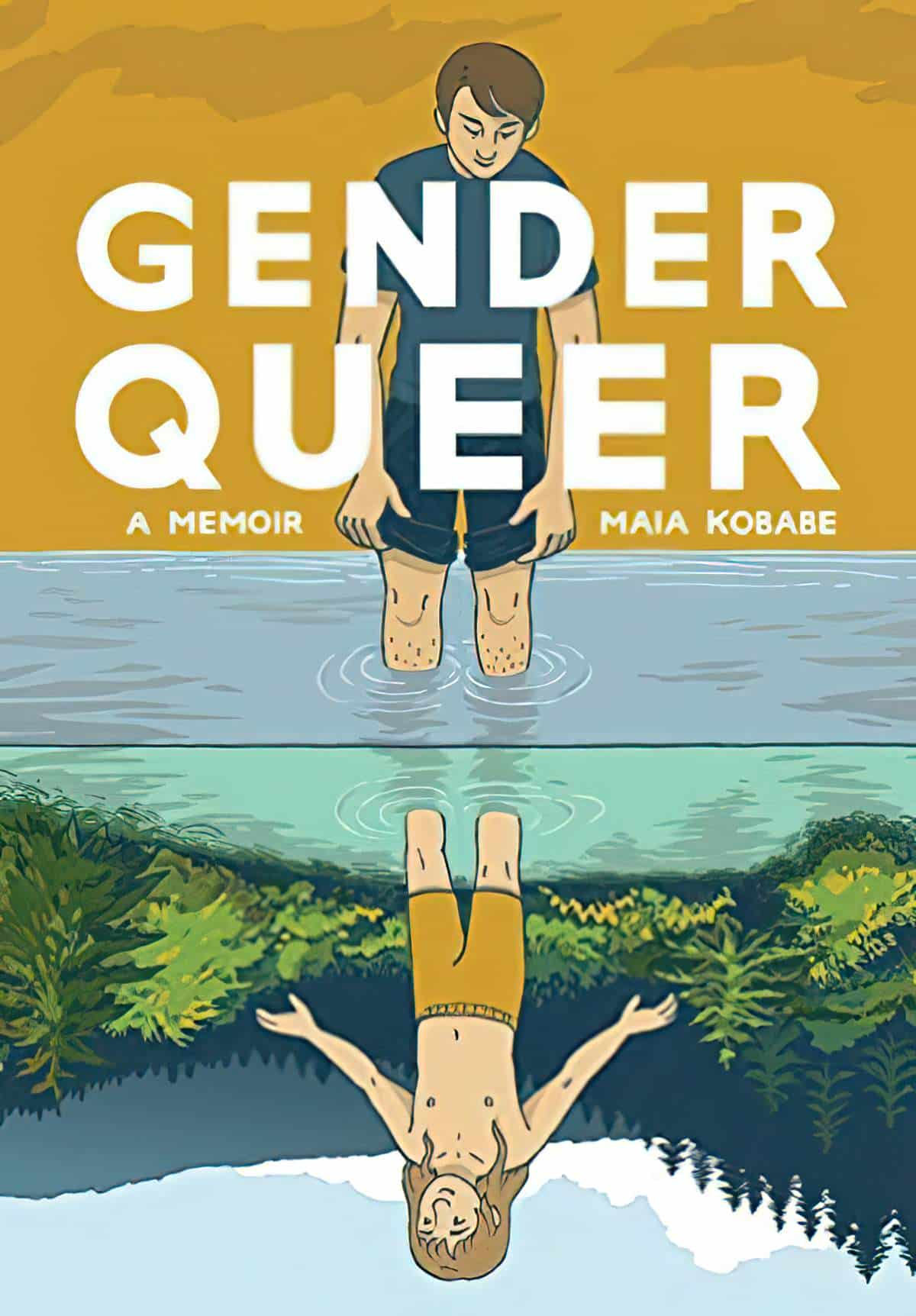
Yep. The most banned book in American school libraries is the life story of an actual ace person who actually had these experiences as an actual young person. Heaven forbid others like the author see themselves reflected in literature.
The memoir was being taught in Milken’s 12th grade English course, Marginalized Voices, which introduces new perspectives to students nearing the end of high school. However, many parents believed that Gender Queer was too explicit for the classroom, despite those pages not being included in the required reading assignments for the text.
The Roar
Having read this book, there’s nothing salacious in here that teens aren’t talking about or doing themselves already, and it is the ultimate irony that the most sexually provocative book is in fact about an asexual person. (If that doesn’t prove Julia Serano’s theory about stigma in Sexed Up, I don’t know what does.)
GRAPHIC MEMOIR: HOW TO BE ACE: A MEMOIR OF GROWING UP ASEXUAL BY REBECCA BURGESS
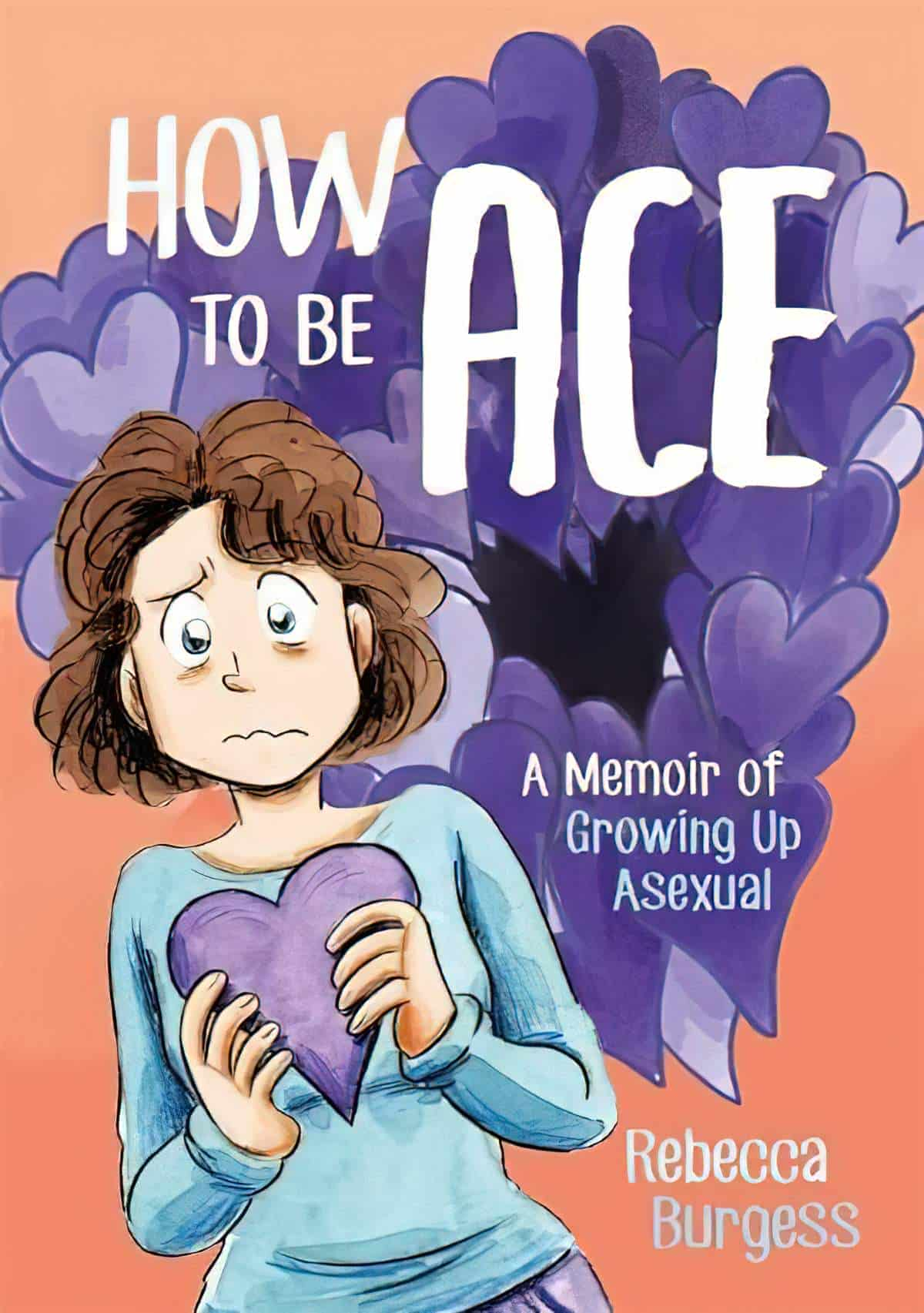
Jessica Kingsley Publishers specialise in a lot of memoir about neurodivergence and queerness. They’re not a large publisher because of course large publishers don’t take bets on such books. So the books tend to be a little more expensive than the mass produced equivalents. Be sure to spend the extra few dollars, especially since books from smaller publishers don’t always stay in print for extended periods of time.
Adults who wouldn’t let their kids near Genderqueer surely (surely?) won’t have a problem with this one?
CLASSIC NOVEL: PRIDE AND PREJUDICE BY JANE AUSTEN
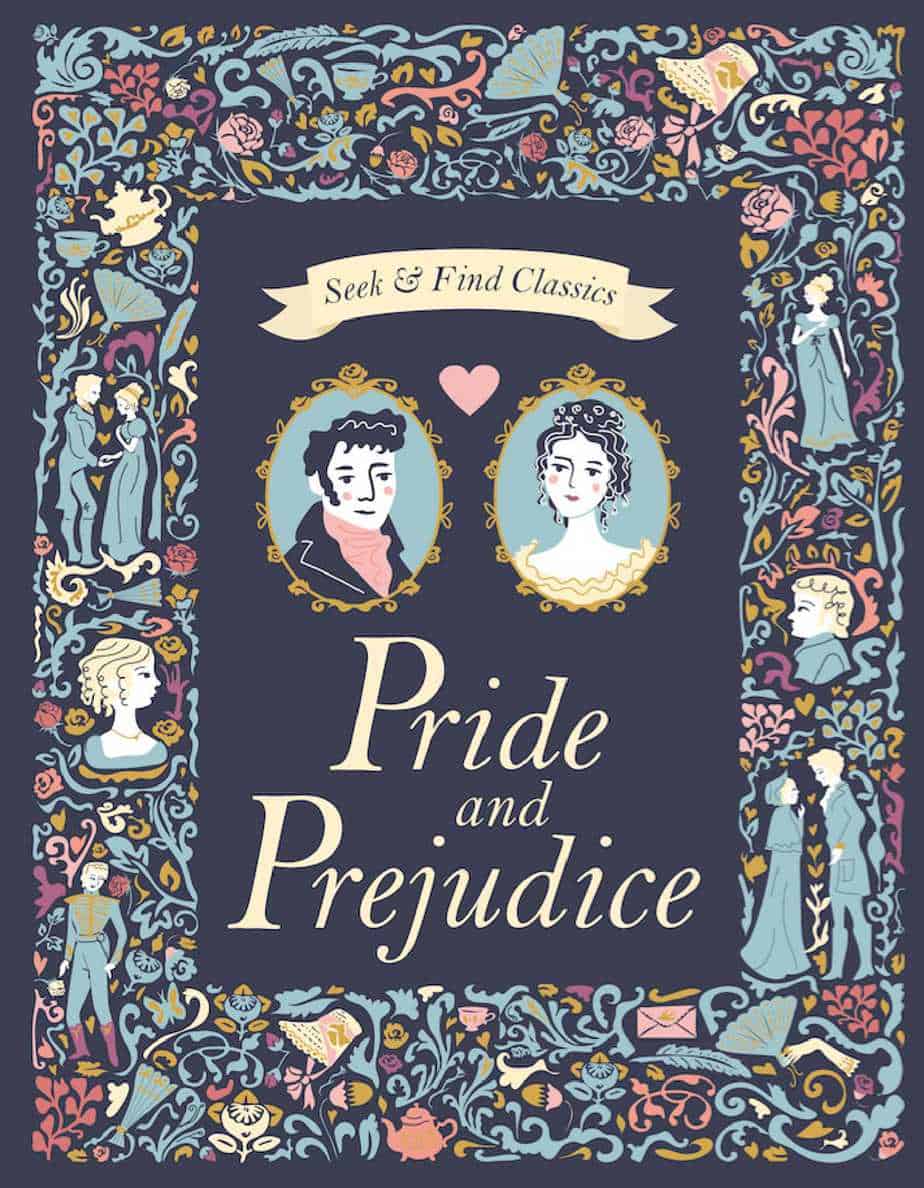
Charlotte Lucas: aromantic. Mary Bennet has taken solace in the Bible, which irritates everyone around her (including Mr Collins) but it would be good to hear more of Mary’s story. As the outsider sister, and the only sister who isn’t interested in young men, Mary could be ace.
(Modern re-visionings of Pride and Prejudice given these women their own stories and invariably give them a sex life.)
CANADIAN CHILDREN’S NOVEL: ANNE OF GREEN GABLES
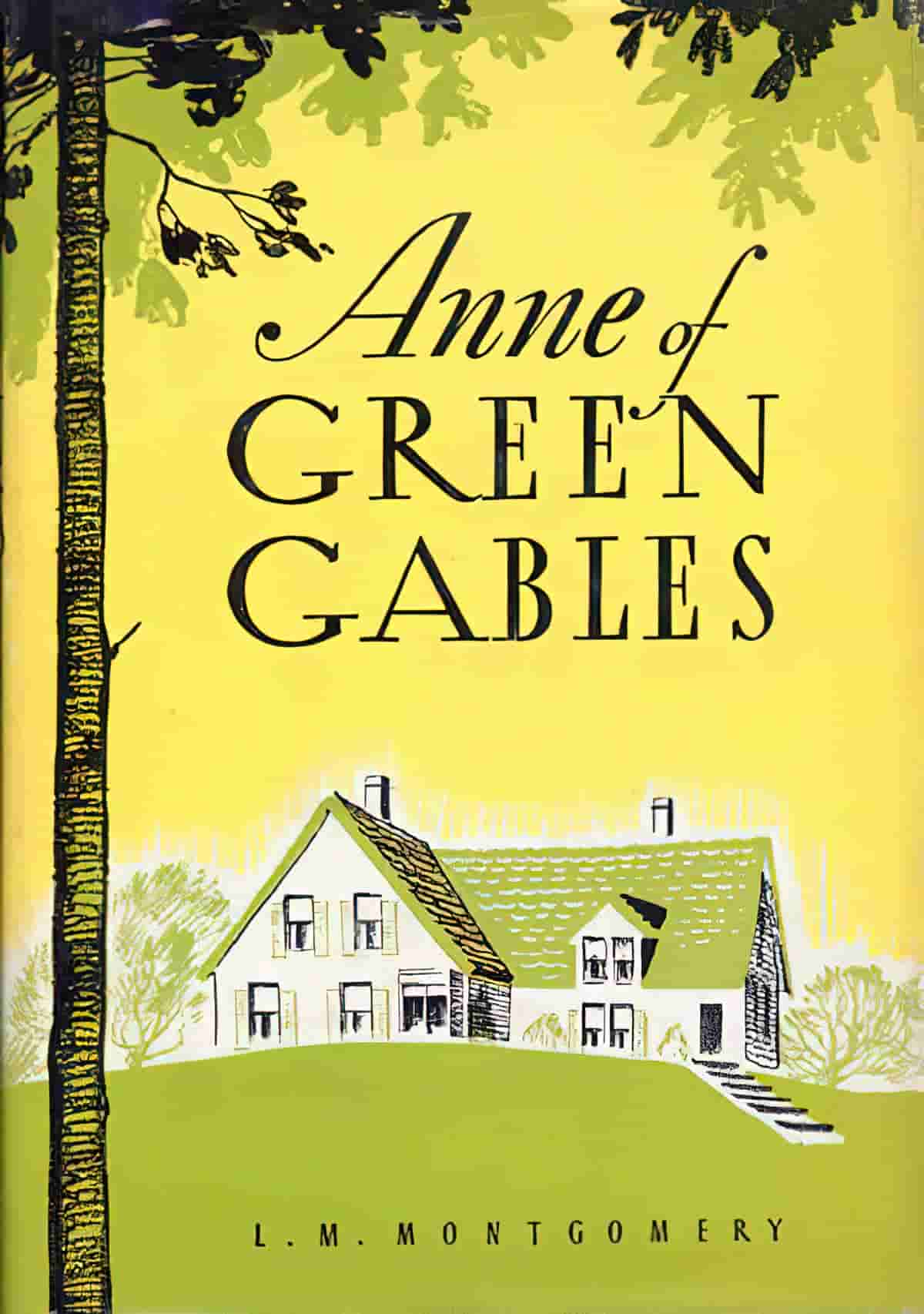
Marilla and/or Matthew Cuthbert. Of course, Anne With An E gives Marilla a romantic past, and tries to do something with Matthew as well. For ace rep, you have to go back to the originals sometimes.
COMPUTER GAME: OUTER WORLDS
Parvati from Outer Worlds is lesbian asexual.
JAPANESE NOVEL: CONVENIENCE STORE WOMAN BY SAYAKA MURATA
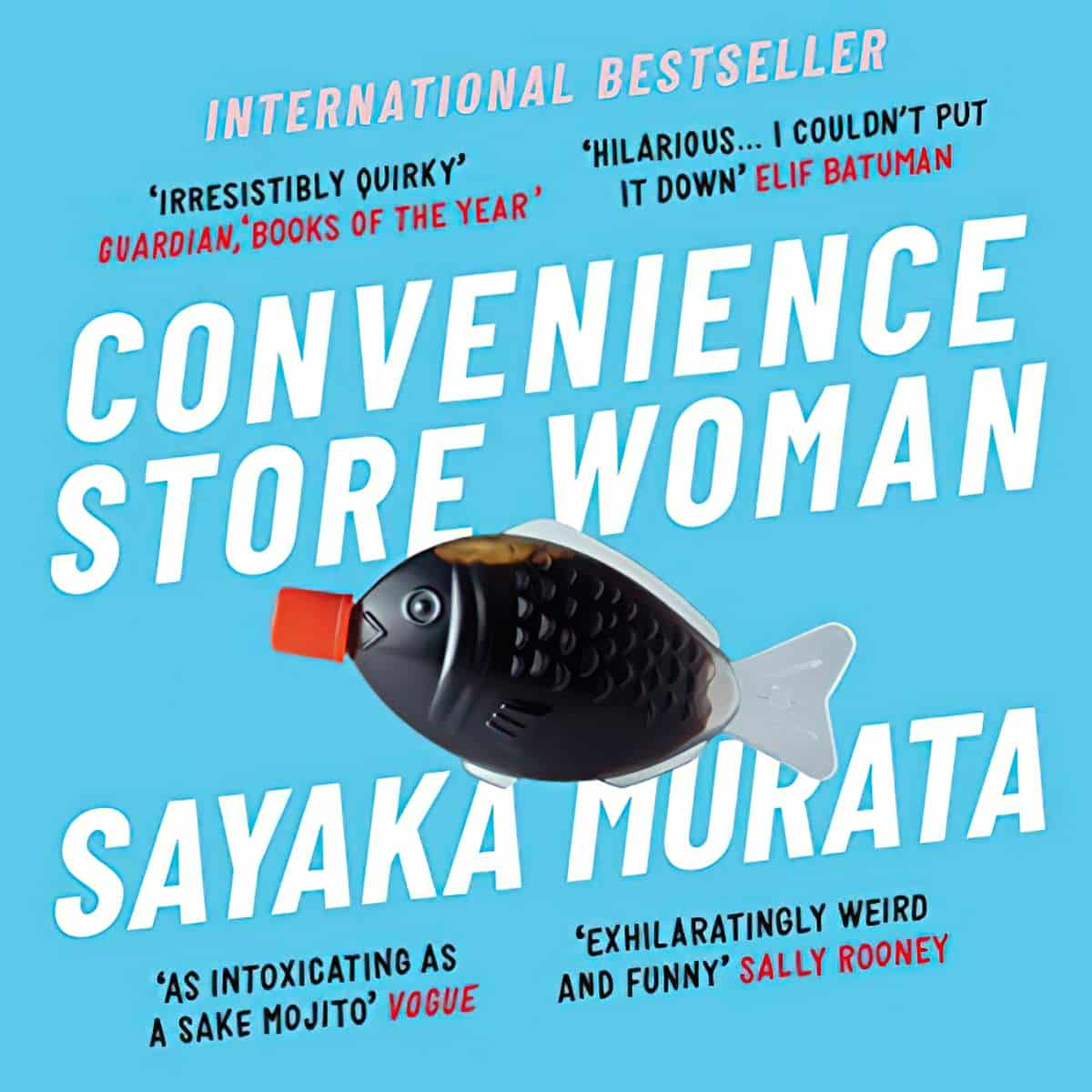
The Japanese title of Convenience Store Woman is コンビニ人間 translates to ‘Convenience Store Human’. I feel the Japanese title should have been maintained, because the main character sees herself as human before she sees herself as ‘woman’, and by calling herself ‘human’ she is both othering herself and also underscoring her humanity nonetheless.
Pressured to live a conventional, married Japanese life, she finds a man whose only desire in life is to stay at home and do literally nothing. Although there’s nothing romantic or sexual between them, suddenly the world is happy for her, proving once and for all that no one was truly interested in her, and her happiness. Everyone wants to see convention play out. That’s all.
SOMEDAY THIS PAIN WILL BE USEFUL TO YOU BY PETER CAMERON (2007)
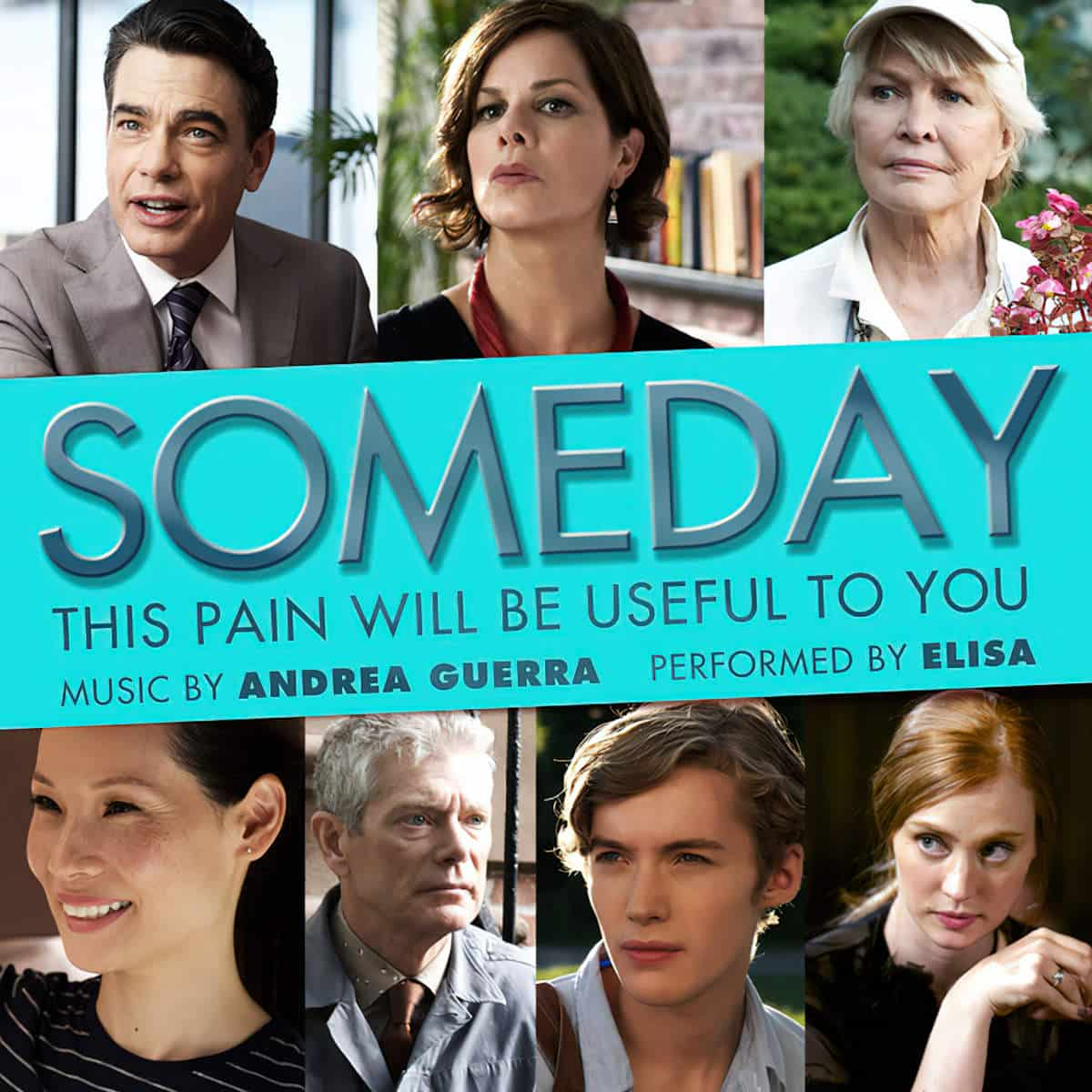
18-year-old James Sveck is generally decoded (and probably written) as a young man about to come out as gay. In fact, the book got a Ferro-Grumley Award for Gay Male Fiction 2008.
But James is not quite at the coming out stage yet.
For now, he’s going to therapy, is thinking a lot about this older guy at his part-time job and as the story ends he eschews a capitalist, patriarchal life which is his to take if he wants it.
You could easily read James as ace, especially if you read him as ace with a homoromantic orientation to go with. There’s really nothing in the story which stands against that take, because it ends before he has any big epiphany regarding his sexuality. The feeling of being a ‘misfit’, of rejecting the normie life, of perhaps being closer to your grandparent than to your parent, because it takes a certain sort of person to understand you, is common to the queer experience more broadly.
The 2007 YA book was adapted as a 2012 film.
ANIME TV SERIES: ONE PIECE
One Pieces is a Japanese anime which premiered on Fuji TV in 1999. The anime is based on a manga series of the same name.
The character called Monkey D. Luffy is the main character, renowned for his trademark straw hat. After eating devil fruit, he gains the super power of a body with the properties of rubber. He gets himself a band of pirates and goes looking for the most treasured treasure in the world: “One Piece”. Then he’ll be the next Pirate King.
EPISODE ONE OF WEDNESDAY
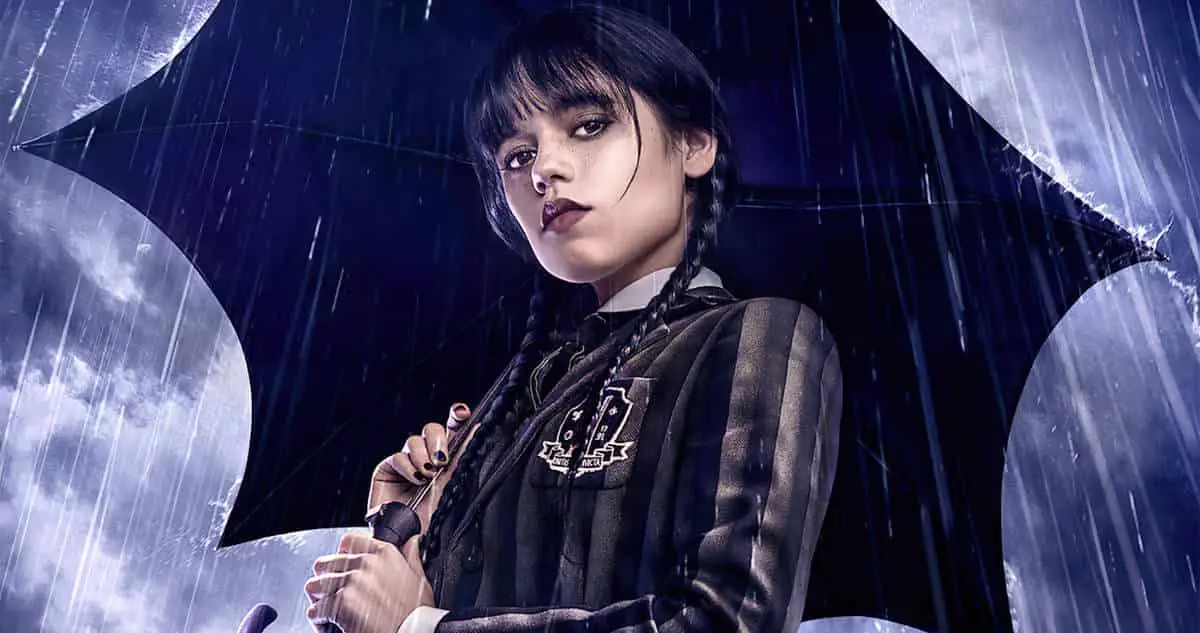
I intended to watch the whole series after close-reading the pilot, but unfortunately it went downhill very quickly — all style and no substance after episode one.
Wednesday Addams is clearly an aroace character but she has not been written that way. The Ace Couple, in December 2022, summed up in their podcast my own exact issues with this show.
Everybody is shipping #Wenclair. Netflix and the show’s cast are leaning into the queer community with interviews and “Wednesgay” drag events without actually showing us meaningful gay rep on screen. Meanwhile, Wednesday could and should be an AroAce icon.
show notes for the “Wednesday” episode of The Ace Couple
TV SERIES: KEVIN CAN F**K HIMSELF
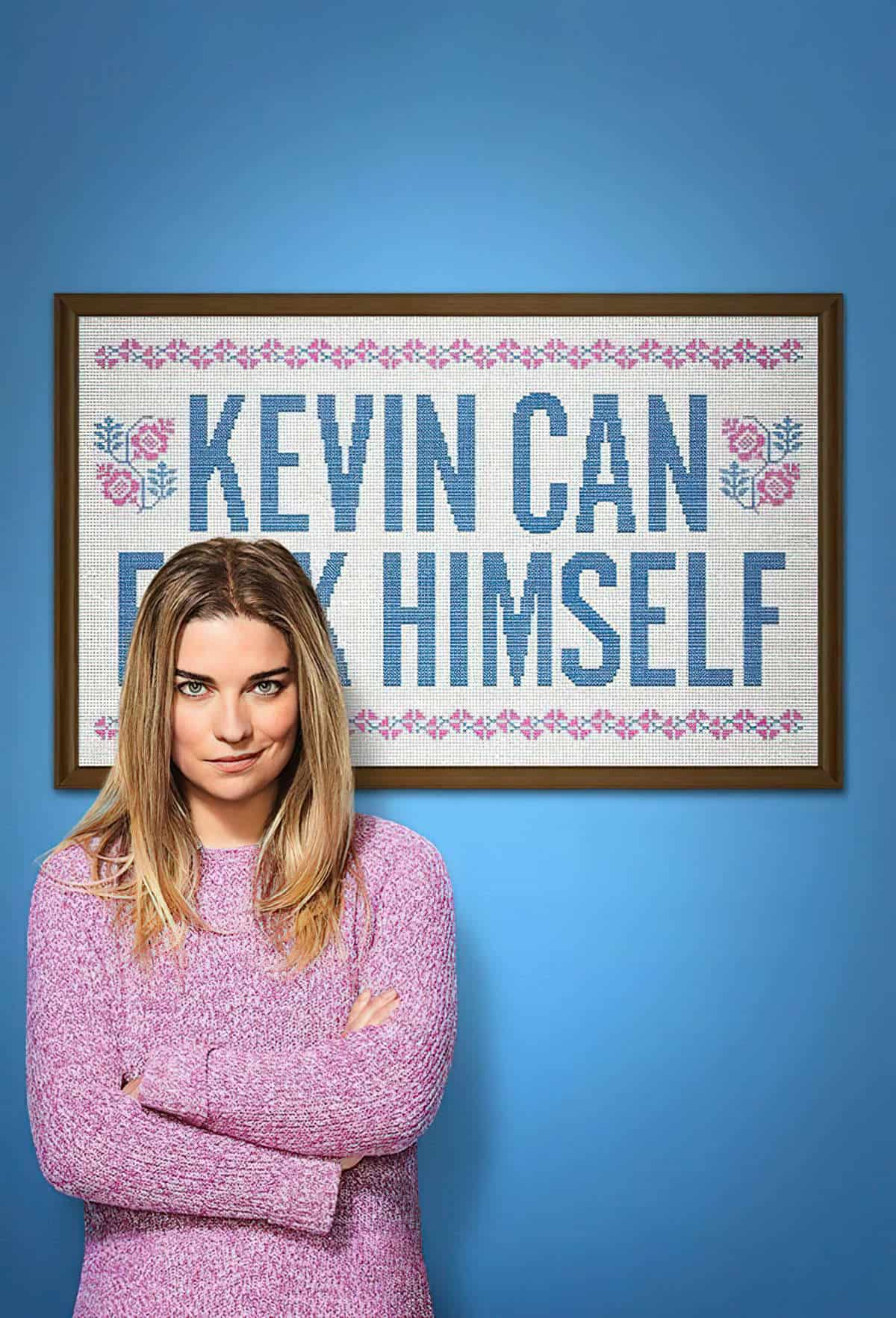
The Ace Couple also introduced me to Kevin Can F**k Himself, which I wouldn’t have watched beyond the first minute had I not got a recommendation, because at first glance I didn’t pick up that the show was a spoof on those ‘I Hate My Wife’ sit-coms like Everybody Loves Raymond and Married With Children. (Is it called a ‘spoof’ if it’s tackling something serious? Like, domestic violence?)
I only have access to Season One here in Australia, but there are two. This show prioritises friendship and downplays the central role of romantic partnership, which is why it may appeal to aces. The satirical parts of the show are so well done they’re actually hard to watch, though.
FAIRY TALES
FOR FURTHER INVESTIGATION
AVEN has a list of pre-2002 fiction with asexual resonance.
The Out Museum has a collection of short clips on various queer identities, including asexual identities.
